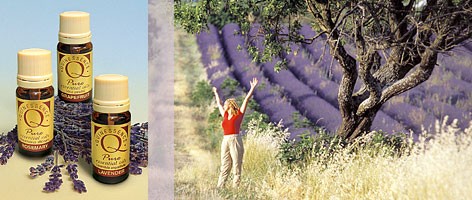
The Function of Leaves
The leaves of a plant come in various shapes and sizes, and they are vital to a plant's existence as they play one of the most important functions. Most plants are capable of making their own food but would be unable to do this without leaves. Food is produced in a plant by a simple process called photosynthesis. This process collects energy from light and converts it to chemical energy. This same energy is then stored in the bonds of sugar and it is the sugar that helps the plant to live and grow.
The process of photosynthesis
The process of photosynthesis involves adding water and carbon dioxide to the captured light to convert it into chemical energy. The chemical energy is stored within the leaf in the sugars; the bonding of the chemicals to the sugars results in a similar molecule to the building blocks of human DNA. Photosynthesis takes place in the chloroplasts of the leaf.
How does the leaf capture the initial energy from the light? This is done with the help of chlorophyll, which is a 'green' colored pigment in the plant. However, although it might look green to the human eye, it isn't actually so. Chlorophyll absorbs the red and blue light wavelengths and reflects the green. As the green light is not absorbed by the plant and the red and blue light is, it is actually the red and blue light which is used in the process of photosynthesis, even though the leaf looks green.
How a plant breathes
Many people forget that a plant is actually a living organism, probably because it doesn't move from its stationary position like other life-forms. However, like all living things, a plant needs to breathe. To help it do this, the leaf on a plant has very small slit-like openings shaped like a mouth. These are called stomata (or stoma for a single opening). The name was actually derived from the Greek word for mouths. The stomata are located on the underneath side of the leaf. The function of the stomata is to allow water vapor and gases to pass in and out of the leaf.
The stomata are also responsible for the process of transpiration, the rate at which a plant loses water. Air enters the plant through the stomata. The air contains carbon dioxide which is used in the photosynthesis process. Oxygen, the by-product of photosynthesis, is then passed out of the leaf through the stomata.
The various types of leaves
Leaves come in all shapes, sizes and textures; for example leaves of the geranium (Pelargonium graveolens) are wide and hairy whereas leaves of rosemary (Rosmarinus officinalis) are small and shaped like needles. Some leaves possess special features; cacti leaves for example need to conserve water from a hot, dry climate and have narrow spines to do this. Plants in strong sunlight and situated in high mountains have furry leaves to protect them. Geranium (Pelargonium graveolens) is, to some extent, an example of this as its native habit is hot. It also grows best in direct sunlight.
Water plants have thick, waxy leaves, which water easily runs off, and prevents the plant from being overcome by water, such as those in rain forests. Deciduous trees lose their leaves in the Autumn whereas evergreens do not. Evergreen trees which produce essential oils include cypress (Cupressus sempervirens) and Scotch pine (Pinus sylvestris).
Leaves are an important part of a plant and, in the world of aromatherapy, some essential oils are extracted from the leaves of plants; in addition to those mentioned above, other leaf oils include:
- Petitgrain
- Eucalyptus
- Myrtle
- Sage
Copyright © Quinessence Aromatherapy Ltd 2012. Written by Geoff Lyth
If you enjoyed this article, please click the 'Like' button and help spread the word:


